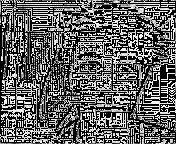who is doing some really good work, John.
Read about his Universal Decompiler project here
Get the source code here
AND for more RCOS projects be sure to visit this link
================================================
He's also been working on a different kind of reverse engineering.
Years ago I saw a presentation at Hope 2008 by Karsten Nohl on reversing chips. Using some space alien technologies such as "Sandpaper" and "MATLAB" they were able to break proprietary RFID cryptography. Wow! Most hackers would have just called up a secretary or something.
Read Karsten Nohl, Starbug, Henryk Plötz, and David Evans fascinating USENIX paper here.
And another nice presentation was given at cansecwest
While the skilled might be able to read www.siliconzoo.org like a coloring book,
I can not. I'm sure that maybe to VLSI CAD researchers and others it's a breeze. But a blog post over at flylogic left me equally confused. I needed something easier for a newbie like me. I kept getting my parallels vs series pretty darn wrong. So I emailed Dr. Nohl who kindly responded.
So once you see it, it's pretty magical. Sort of. I haven't worked my way through all of the zoo just yet.
Enjoy this educational visual inspection of 2-input CMOS NOR and NAND gates.

